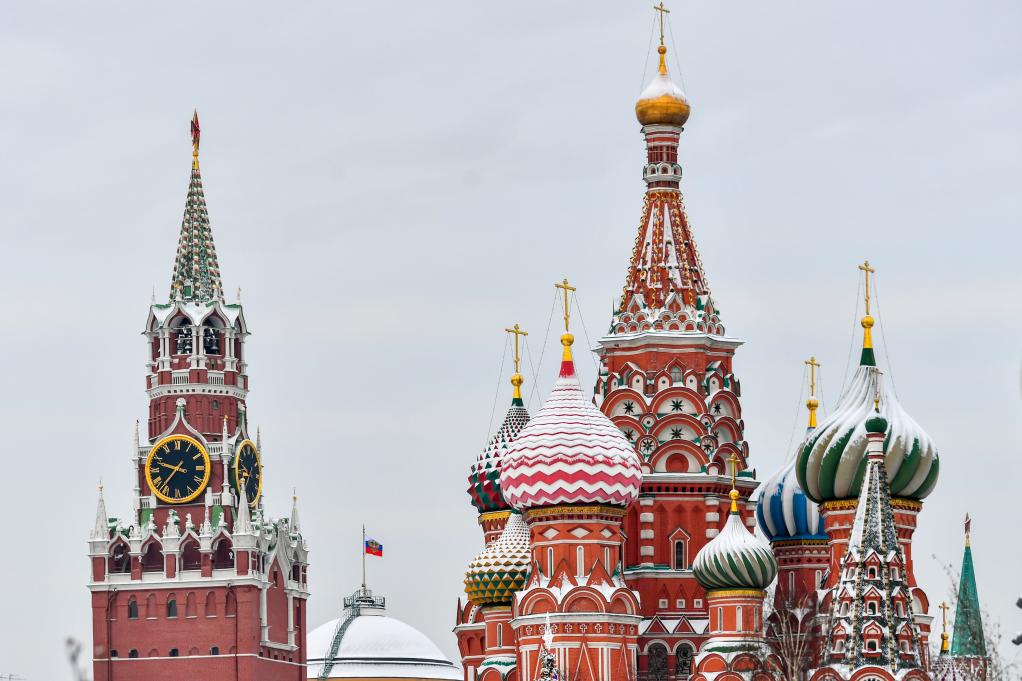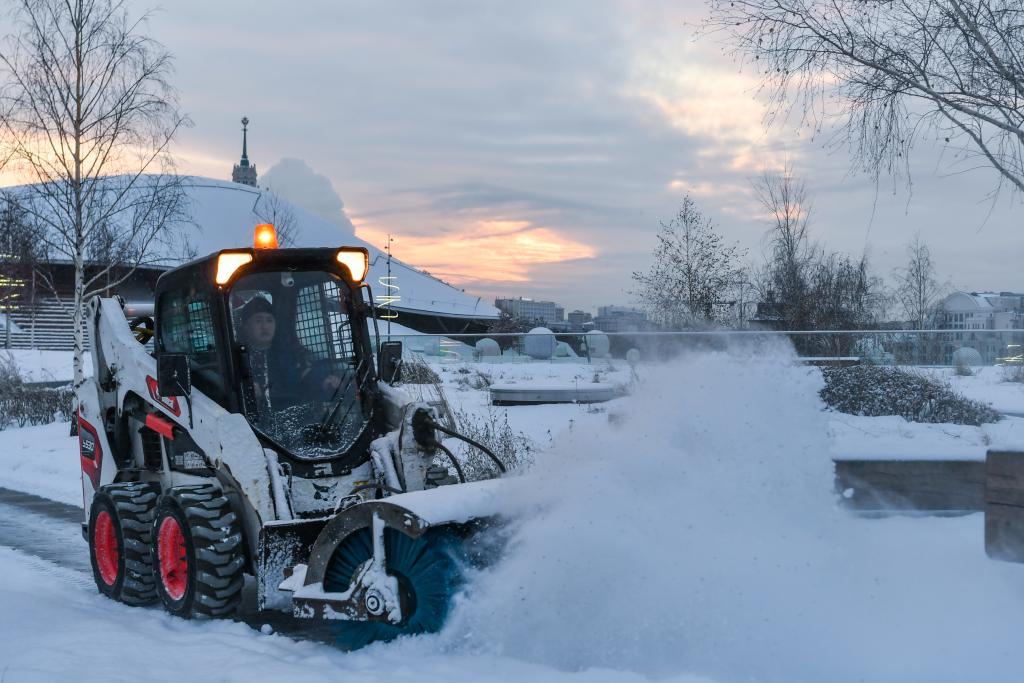Xinhua News Agency, Moscow, January 7th Title: Russian economy meets challenges in recovery.
    Xinhua News Agency reporter Huang He
    Although the impact of the Ukrainian crisis and western sanctions on Russia continues, the Russian economy as a whole showed a recovery momentum in 2023, and the economic growth rate exceeded the expectations of the Russian government and many international institutions. But at the same time, the Russian economy has also exposed some problems and challenges. Analysts predict that the Russian government may take measures this year to promote balanced industrial development, improve production efficiency, and implement a relatively tight monetary policy to curb inflation and promote sustained economic growth.

This is the Kremlin (left) and St. Vassili’s church after the snow in Moscow, Russia, on January 6. (Xinhua News Agency reporter Cao Yangshe)
   Triple factors help economic recovery
    In 2023, the Russian economy showed a recovery momentum. Russian President Vladimir Putin recently summed up the situation of Russia’s economic development in 2023 in the face of the "annual inventory" activities of the media and the public, saying that compared with the 2.1% contraction of gross domestic product (GDP) in 2022, Russia’s GDP is expected to increase by 3.5% in 2023.
    Putin said that in 2023, Russian industrial production is expected to increase by 3.6%, manufacturing industry by 7.5% and investment in fixed assets by 10%. At the same time, the profits of Russian enterprises are expected to increase by 24%, and the wage income of residents is expected to increase by 8%.
    Nikyshina, general manager of the Russian Export Center, told Xinhua that Russia has successfully overcome the pressure of sanctions imposed by the West since last year, and the goal of "the West hopes to crush Russia’s economy and crowd Russia out of the international trade chain through sanctions" has not been realized. "Russia has not been isolated from international trade, but is a very active participant in the world market."

On January 6, in Moscow, the Russian capital, the staff drove a snow removal vehicle to clear the snow on the road. (Xinhua News Agency reporter Cao Yangshe)
    Analysts believe that Russia’s economic growth last year benefited from three aspects. First of all, the relatively stable export income of energy and grain, and the improvement of manufacturing and consumption have provided support for economic growth. The relatively stable export income of energy and grain is an important factor to promote Russian economic growth. At the same time, Russian official data show that about one-third of Russia’s economic growth in 2023 comes from the military-industrial complex and related electronics, computers, optics and other industries.
    Second, financial control measures have been effective. Since last summer, the ruble has been depreciating, and the exchange rate of the US dollar against the ruble has repeatedly exceeded 1 to 100. In this regard, Russia has introduced strict control measures, requiring some export enterprises to carry forward foreign exchange income in the domestic market, and strengthening financial supervision of related enterprises to reduce the volatility of the ruble by regulating foreign exchange liquidity.
    Moreover, Russia has broken through the western blockade in international trade. Since 2023, on the one hand, Russia has vigorously developed trade with "friendly countries", on the other hand, it has actively promoted the use of local currency in international settlement. Russian Prime Minister Dmitry Mishustin said that the trade volume between Russia and "friendly countries" is increasing rapidly in Russia’s total foreign trade. In addition, by the end of 2023, the share of local currency settlement between Russia and other countries is expected to reach 65%.

On January 1, people took the subway New Year train in Moscow, Russia. (Photo by Xinhua News Agency reporter Bai Xueyu)
   Multiple challenges constrain sustained growth
    Russia still faces many risks and challenges to achieve sustained growth. Analysts pointed out that in addition to external sanctions, the Russian economy also faces challenges such as industrial imbalance, inflationary pressure and labor shortage.
    On the one hand, the growth model driven by military production may be difficult to sustain. Last year, the Russian military’s industrial production increased substantially, but the production of civilian products requiring complex technological processing capacity decreased significantly. Analysts believe that the current economic growth model that relies too much on military production is not only unsustainable, but may even further push up inflation.
    On the other hand, the pressure of stabilizing prices, ensuring supply and reducing inflation continues to increase. According to the reporter’s observation, in big cities such as Moscow and St. Petersburg, the supply of fruits, vegetables and meat is still tight or the prices have risen sharply. In order to curb inflation, the Russian central bank recently raised the benchmark interest rate to 16%. Nabiulina, governor of the Russian central bank, said that the fundamental reason for the high inflation is that the current production cannot immediately meet the growing demand.
    Moreover, the shortage of labor will also restrict the sustainable economic growth. At present, the unemployment rate in Russia is at an all-time low of 2.9%. According to "Russian newspaper", the current employment gap in Russian manufacturing industry is 660,000, and the employment gap in agriculture is 200,000. Berenikaya, a macroeconomic analyst at the Russian investment company, said that the labor shortage is related to Russia’s long-standing population problem, as well as the impact of special military operations and national defense production on the labor market.

On December 21, 2023, in Moscow, the Russian capital, people hugged under the New Year fir tree. Xinhua News Agency (photo by Alexander)
   Multiple measures to stabilize economic operation
    Considering that many unfavorable factors may inhibit the economic growth momentum, Russia’s economic growth rate may slow down this year. The Russian central bank predicts that the Russian economic growth rate will be between 0.5% and 1.5% in 2024.
    Analysts predict that the focus of the Russian government’s economic policy in 2024 will be to promote balanced industrial development, improve production efficiency, and at the same time cooperate with relatively tight monetary policy to curb inflation. In order to promote economic growth, in 2024, the Russian government is expected to increase efforts to support enterprises to invest in production, develop new technologies and strengthen personnel training.
    Maxim Oreshkin, adviser to the Russian President, said that improving the level of production automation is one of the top priorities of the Russian government in the future, and "high-quality talents and automation are two key factors that determine the long-term development level of the Russian economy".
    The Russian central bank recently predicted that by the end of 2023, Russia’s inflation level will be between 7% and 7.5%, far exceeding the target level of 4%. The Russian government hopes that the inflation rate will fall back to 4% to 4.5% by the end of 2024. Nabiulina said, "This means that we will maintain a tight monetary policy for a long time to come."